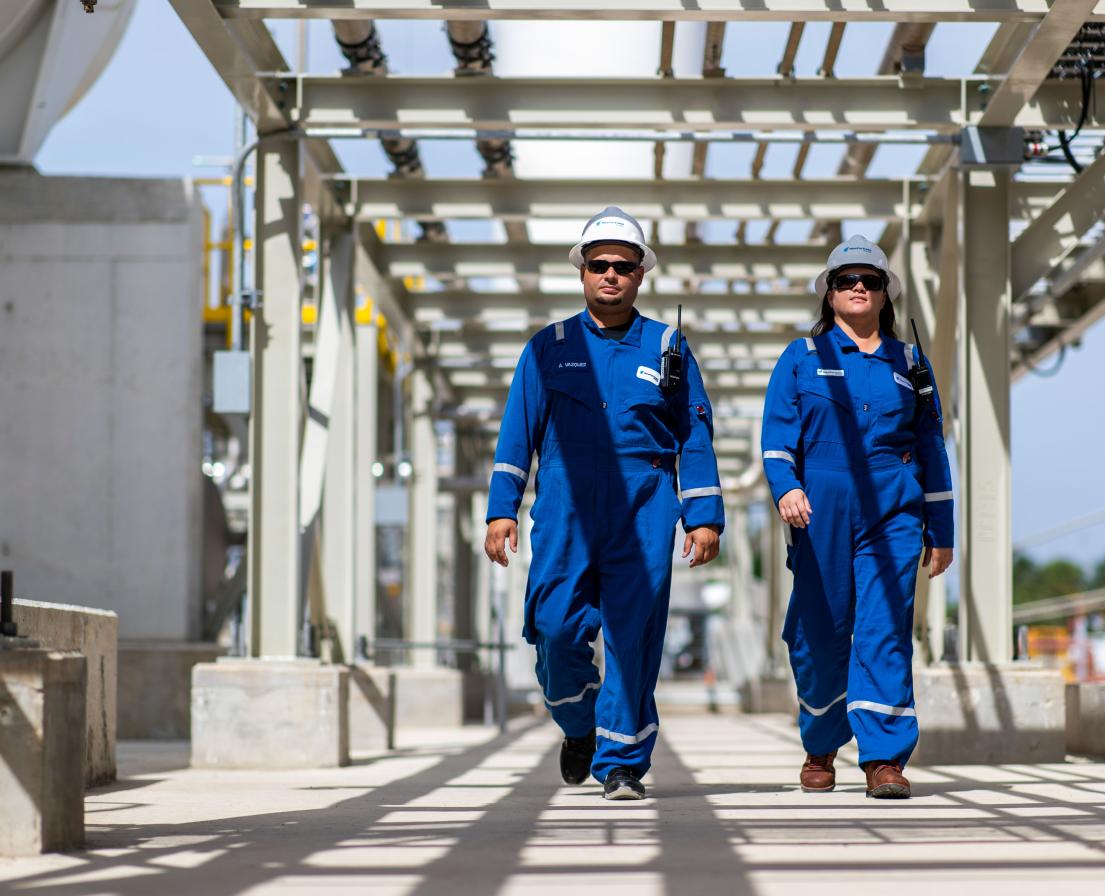El ABC del GNL:
introducción al gas natural licuado
HISTORIA LLENA DE ENERGÍA
Conozca GNL
Learning about liquefied natural gas (LNG) comes naturally with this quick tutorial on this cleaner, more efficient, and cheaper alternative to oil and coal.
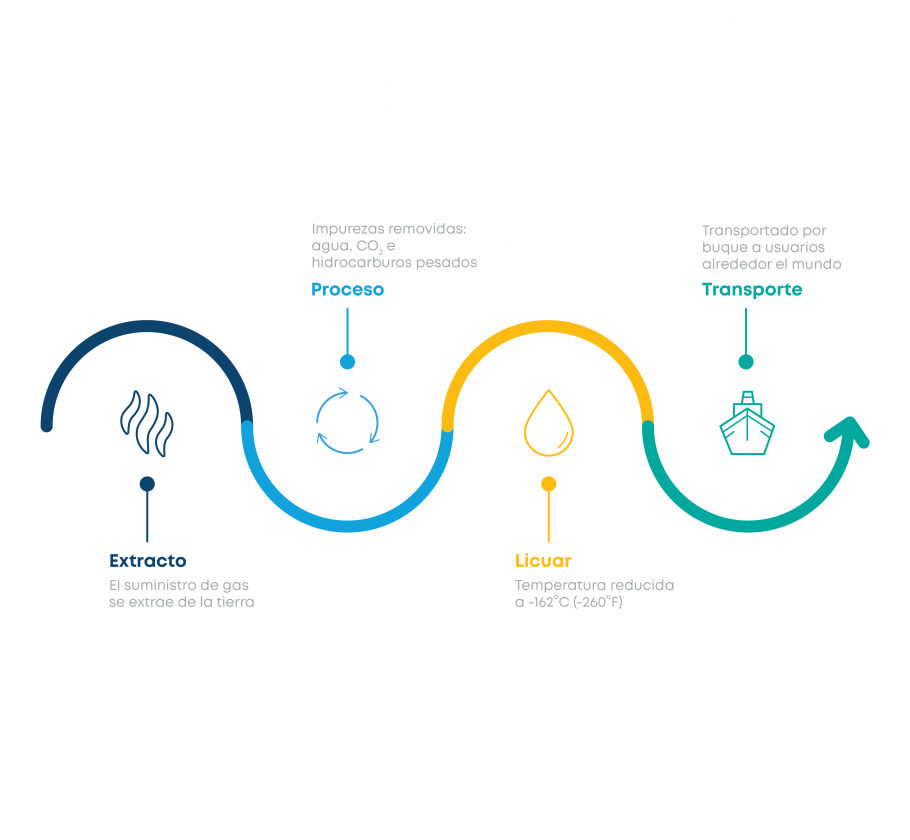
Una buena química con GNL
LNG is primarily made up of methane, and is currently sourced from countries including, but not limited to, Canada, China, Norway, Russia, and the United States.1 After natural gas in its gaseous state is extracted from stone formations below the earth's surface, it is cooled to approximately -162 ° C (-260 ° Fahrenheit) to transform it to its liquid state. The cooling process (which also removes impurities such as water, carbon dioxide (CO 2 ), nitrogen, sulfur, and other hydrocarbons so that they do not harm the downstream facilities and / or freeze the gas, instead of liquefying it.
Fun Fact: Commercial LNG production started in the US in 1917.
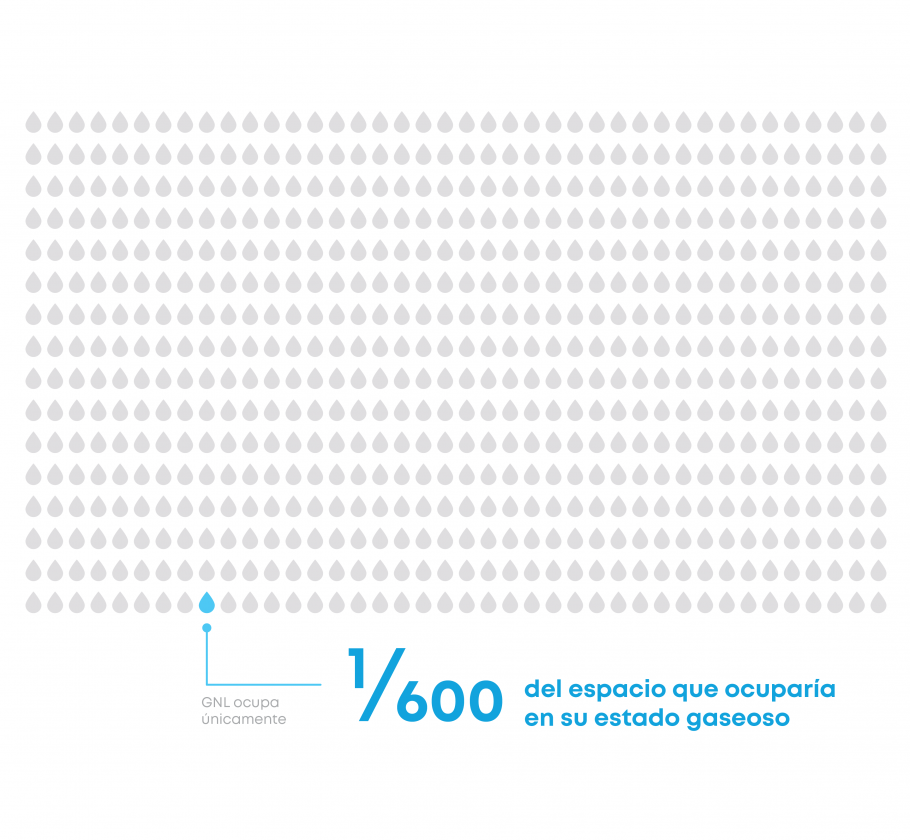
Como sacar algo
(aparentemente) de la nada
LNG is perhaps best known for the attributes it does not have: it is odorless, colorless, non-flammable, non-corrosive, and non-toxic.
Fun Fact: LNG occupies only 1/600 of the space it would occupy in its gaseous state.
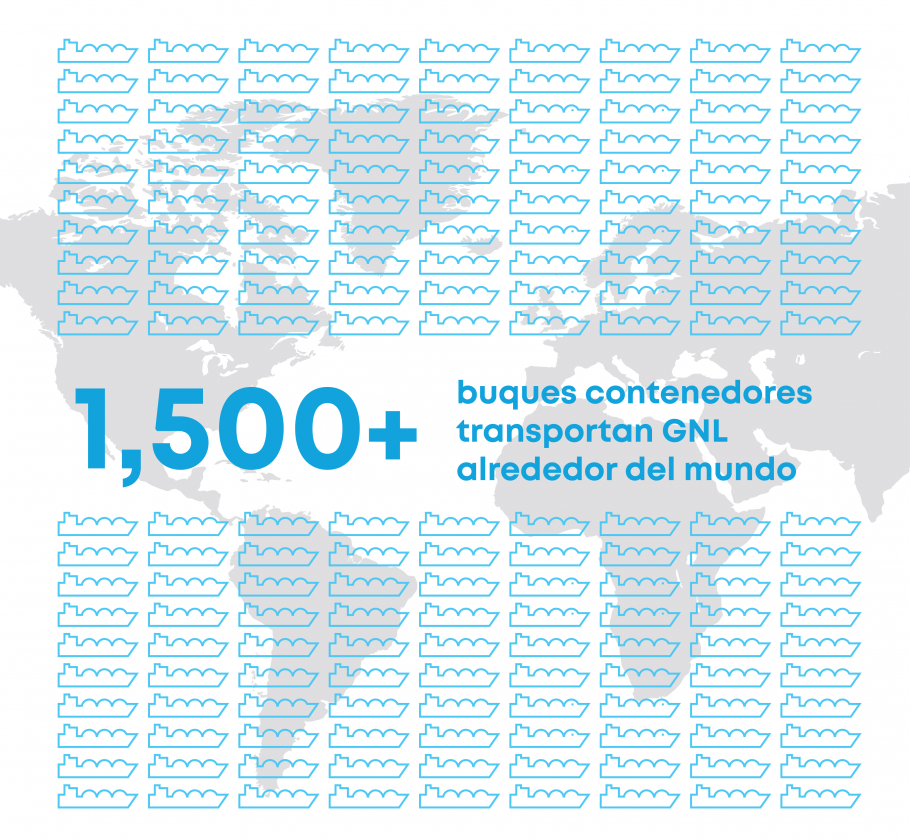
A los siete maras con GNL
Since LNG is much denser than its gaseous form, LNG occupies a much smaller volume. That makes it easy for specially designed and refrigerated ships to store and transport LNG to users through ports around the world, where it can be re-gasified and piped for continued energy production. Today, Western Europe, North America, and North Asia have the most developed LNG pipeline networks. one
Fun Fact: LNG has traveled more than 100 million miles since it started being transported in bulk by ships in the 1960s - that's like going around land 4,000 times!2 Today more than 1,500 ships carry LNG around the world.3
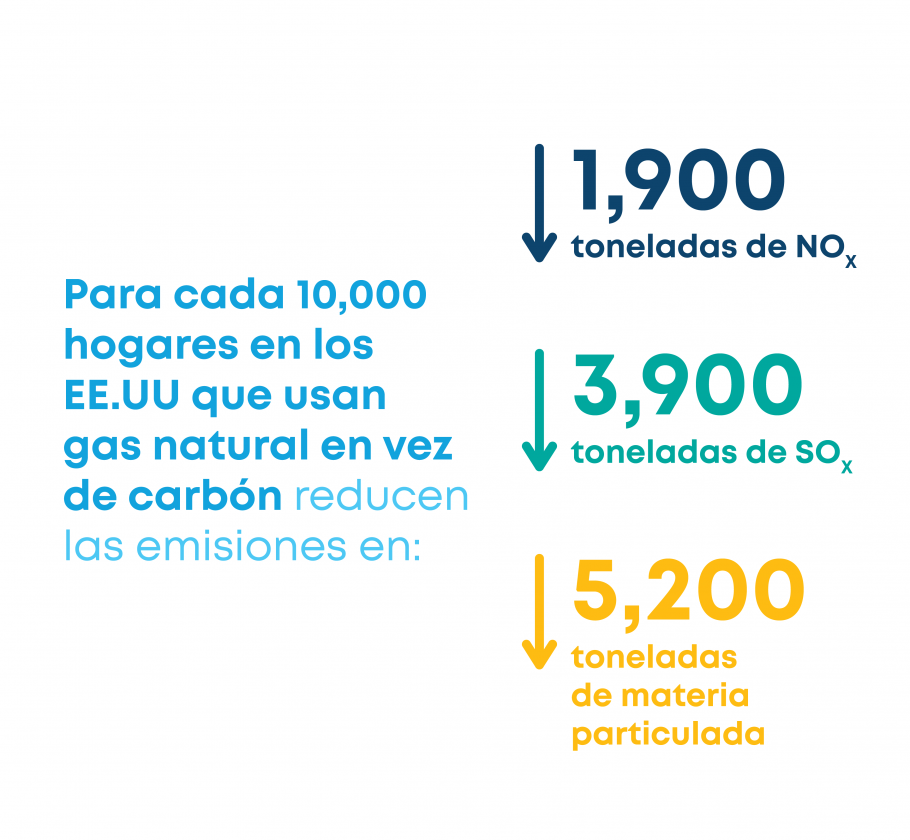
Limpiar el aire
En comparación con combustibles tradicionales como petróleo o carbón, usar GNL emite menos óxido de nitrógeno (NOx), menos CO2, casi nada de óxido de azufre (SOx) o material particulado fino, y en general emite menos emisiones al medio ambiente.4 De hecho, según el Departamento de Energía de los EE.UU., para cada 10,000 hogares en los EE.UU que usan gas natural en vez de carbón, se evita que 1,900 toneladas de NOx, 3,900 toneladas de SOx, y 5,200 toneladas de materia particulada entren al aire que respiramos.5
Dato Divertido: El gas natural produce 25% menos emisiones de CO2 que el diesel, y apenas la mitad de las emisiones CO2 de carbón antracita.6
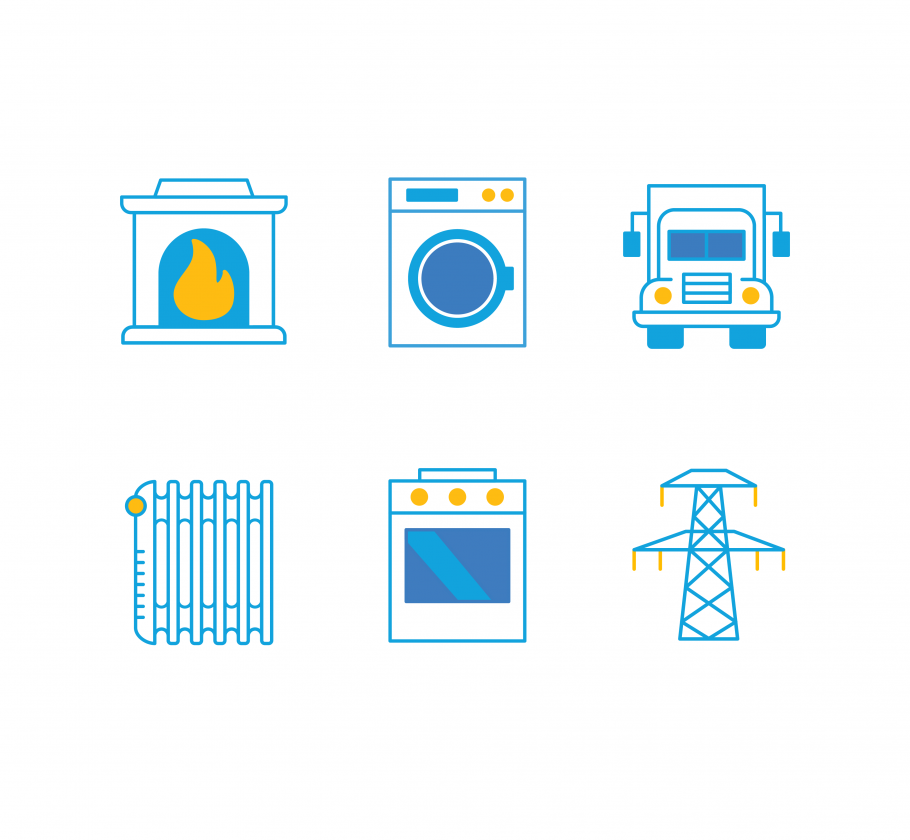
¡LNG, aquí, allá, por todo lado!
¿Regulas la temperatura de tu hogar o la oficina con un calentador o aire acondicionado? ¿Usas una lavadora y secadora de ropa? ¿Cargas tu teléfono? Esas son apenas unas pocas de la infinidad de nuestras actividades cotidianas que el gas natural hace posible.
Dato Divertido: GNL es mucho más liviano que el agua por volumen, y si se derrama en agua, se vaporiza…¡y sin dejar ningún residuo nocivo!7
